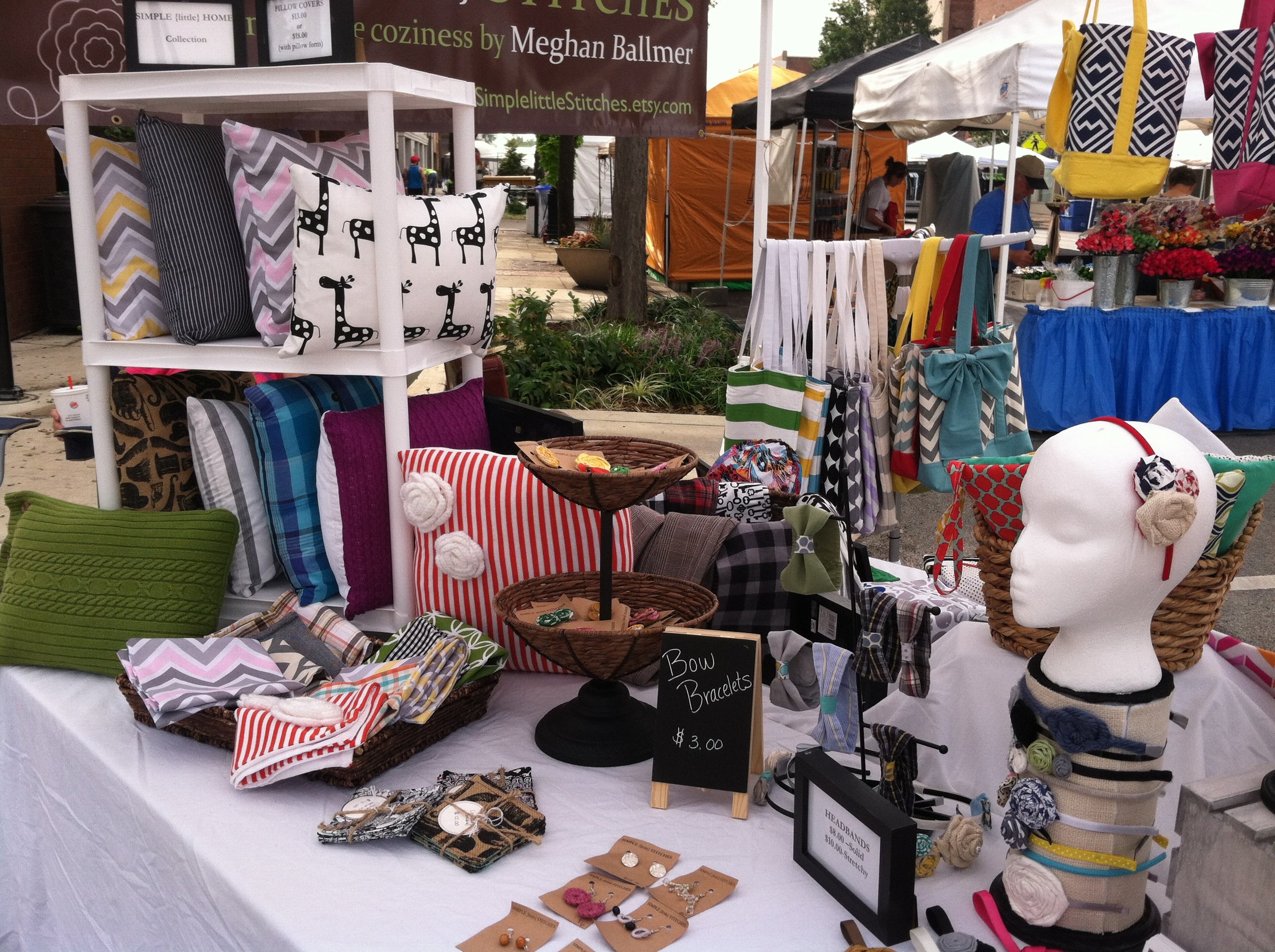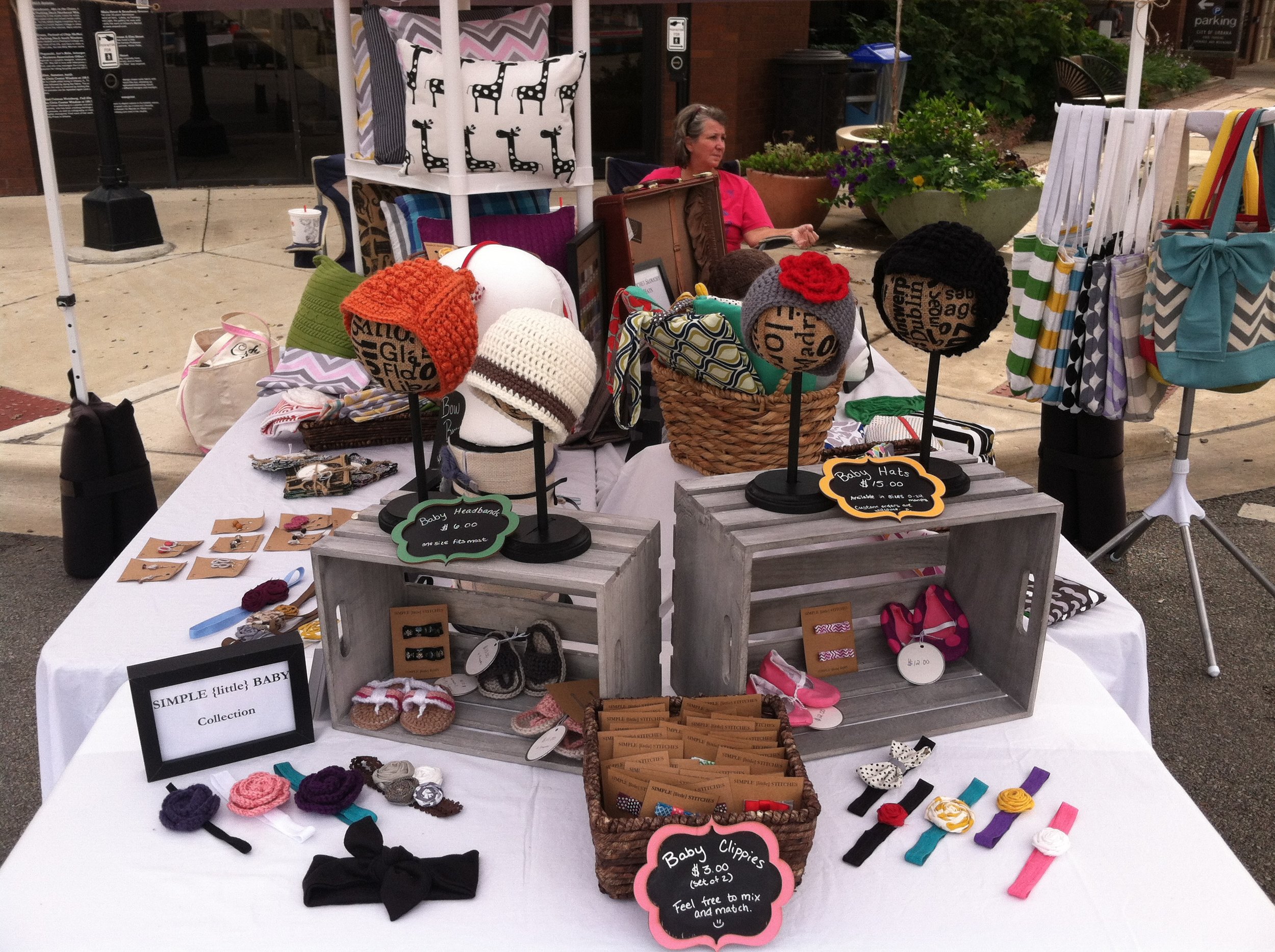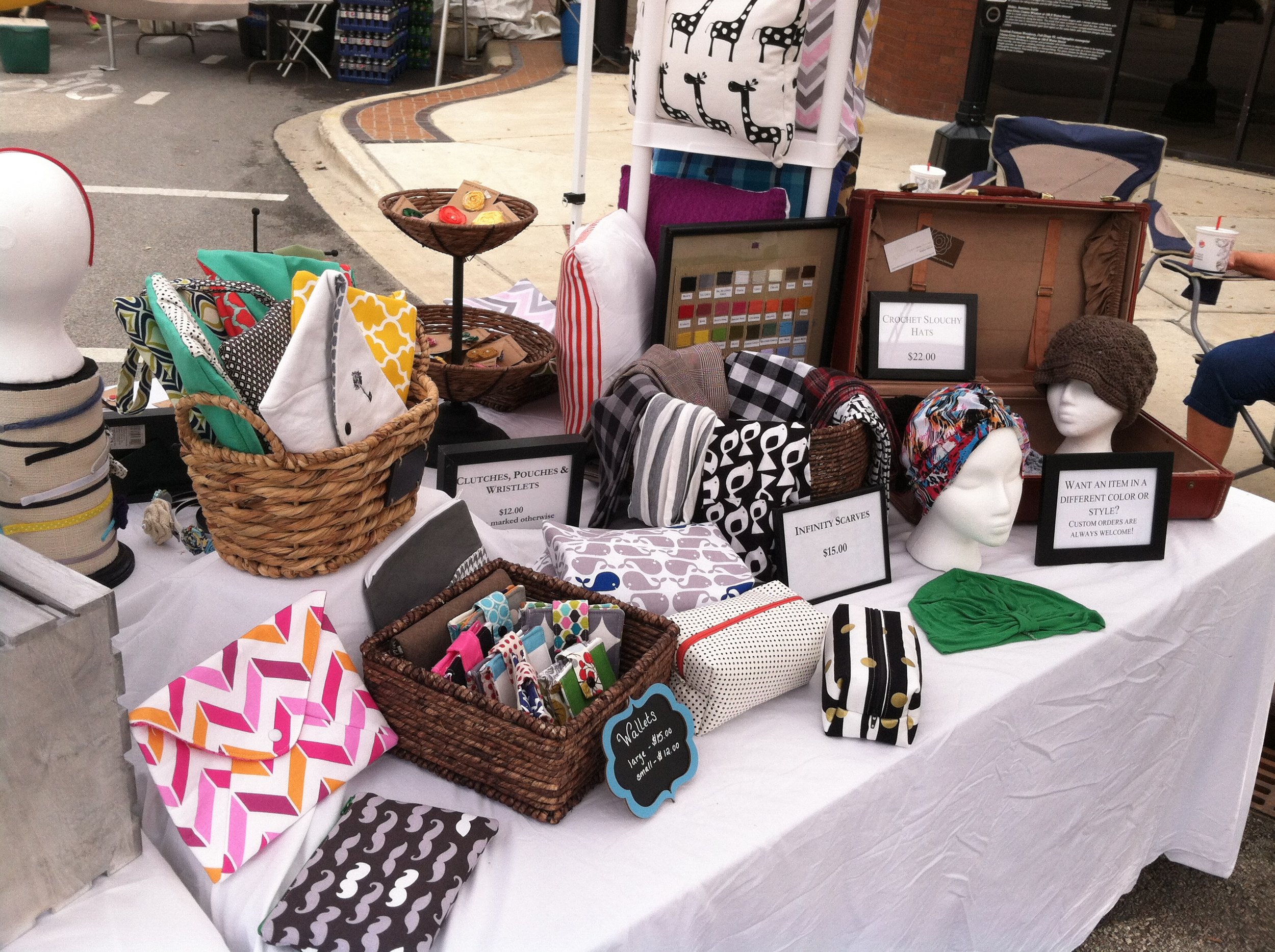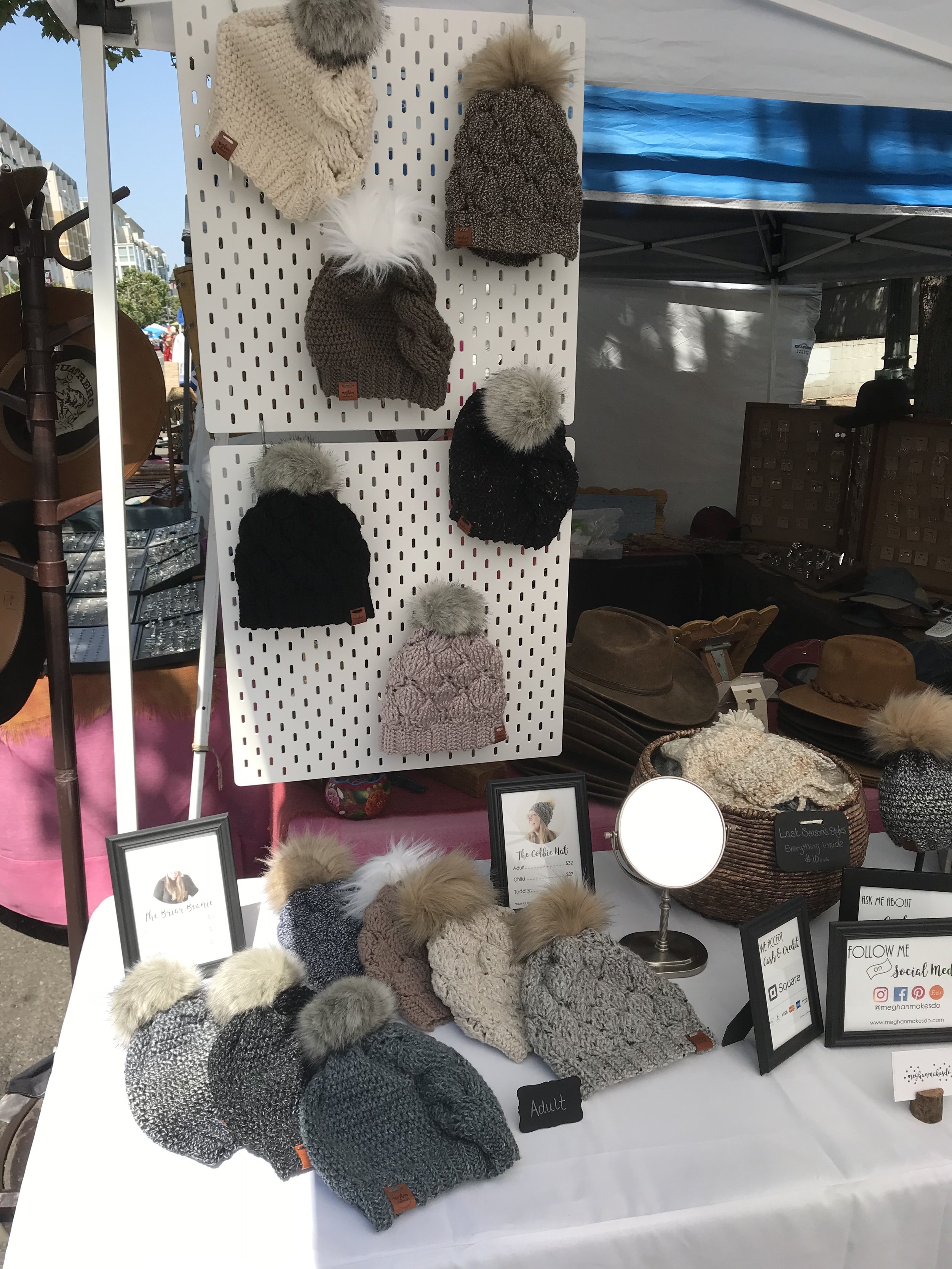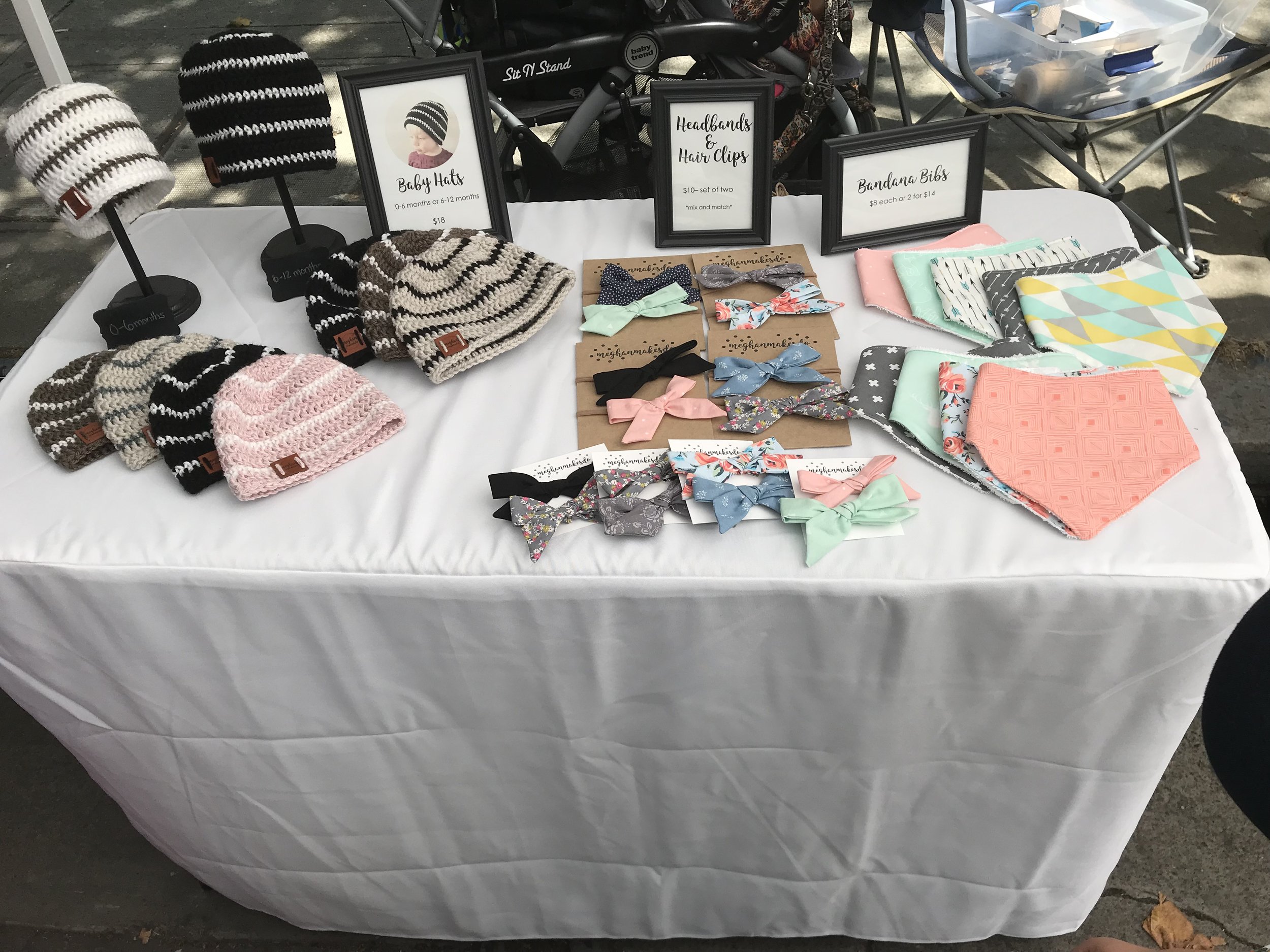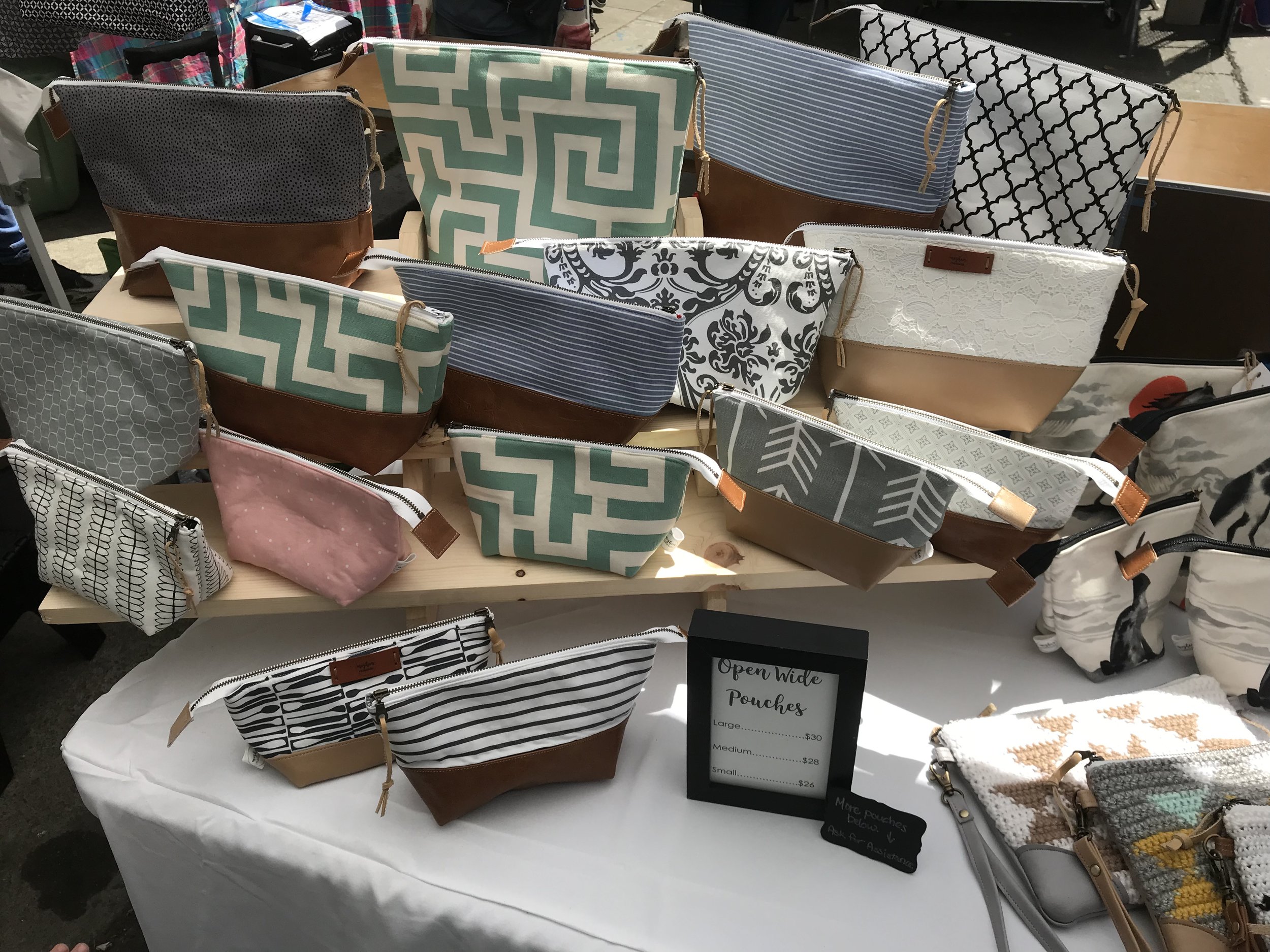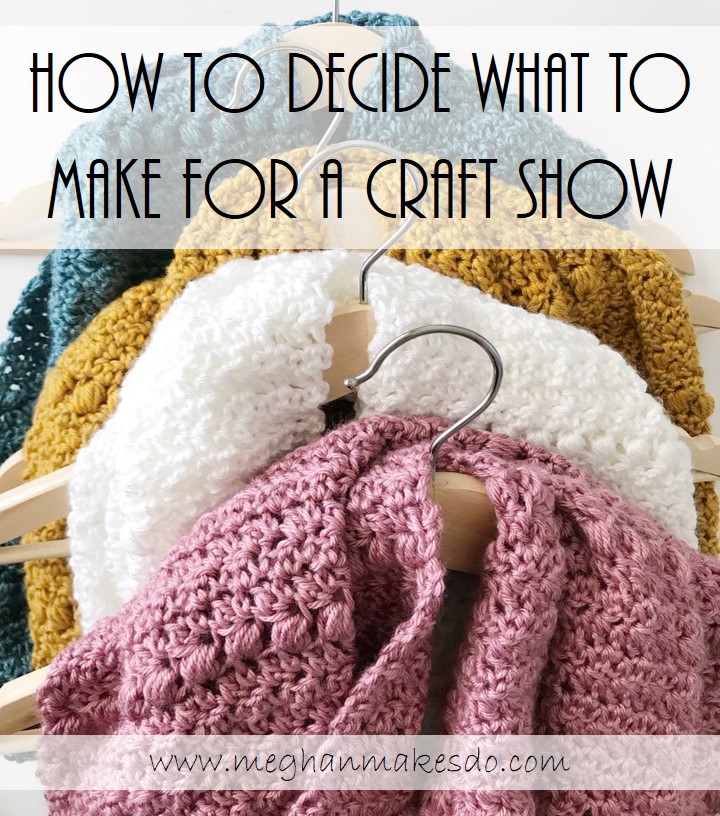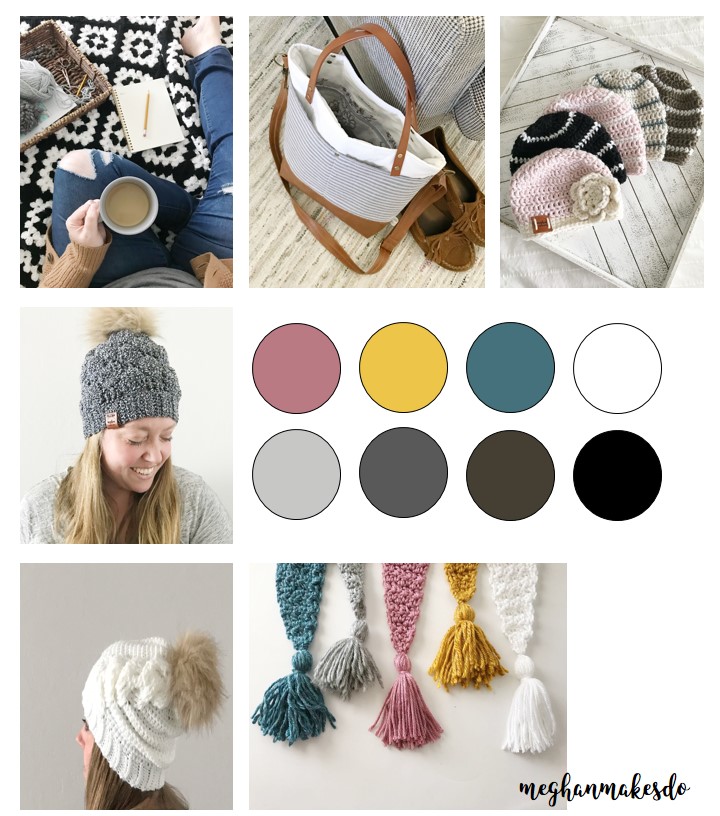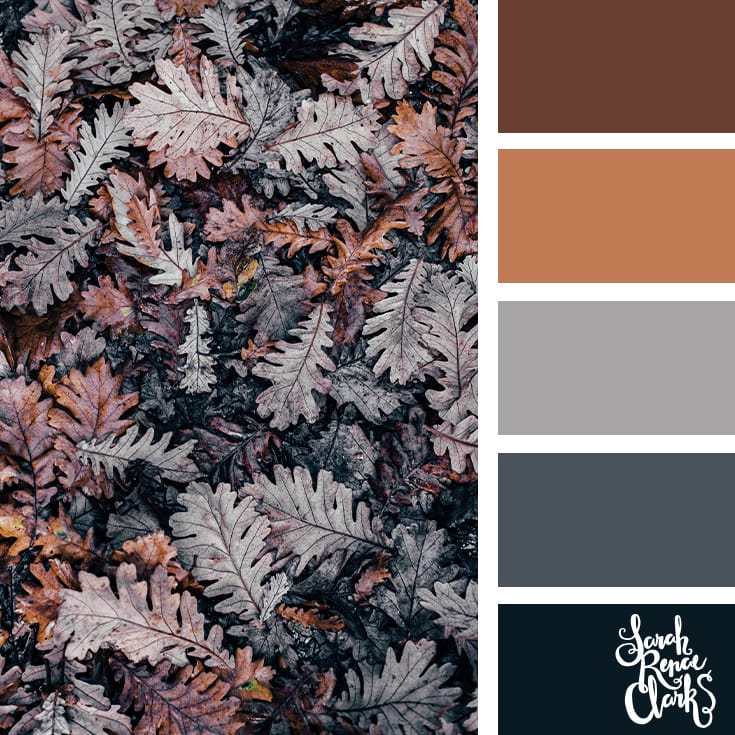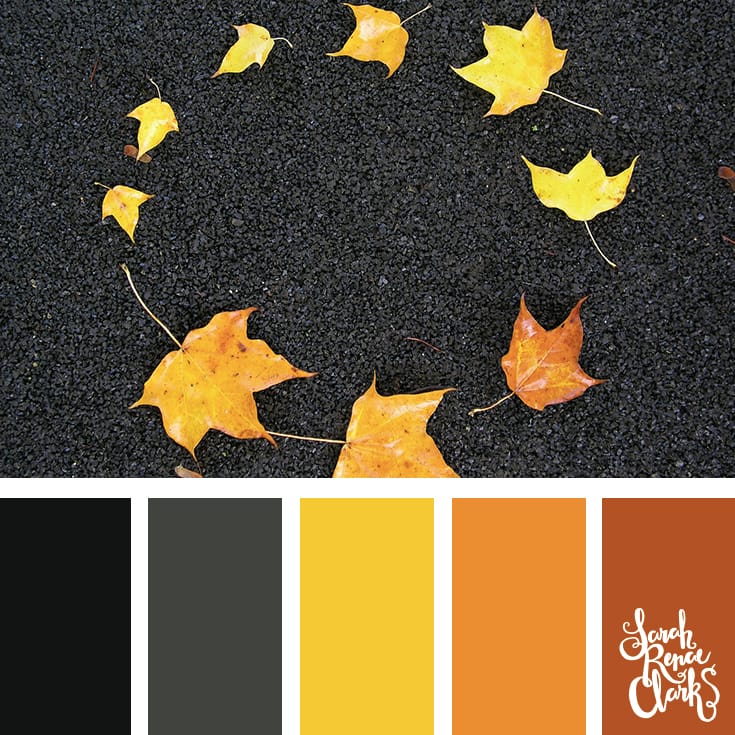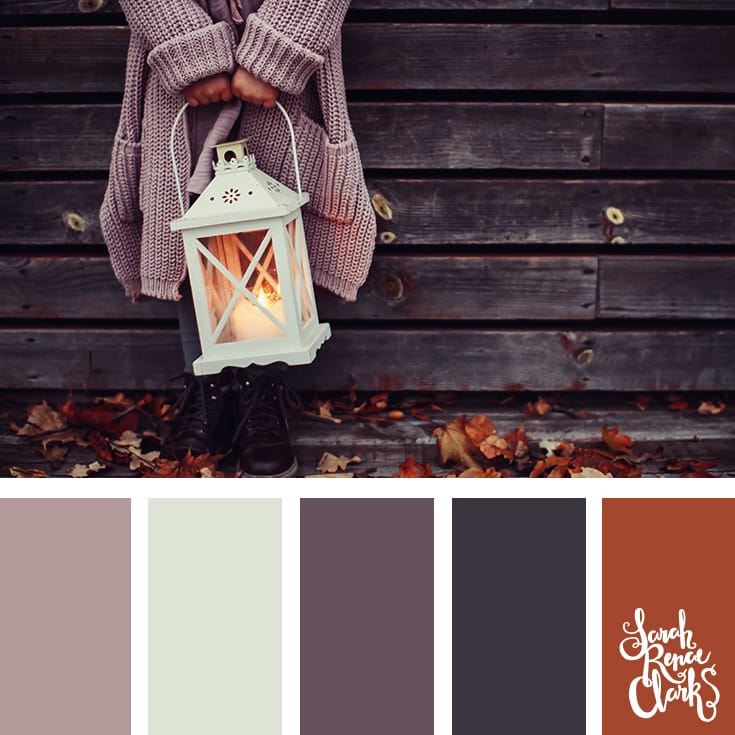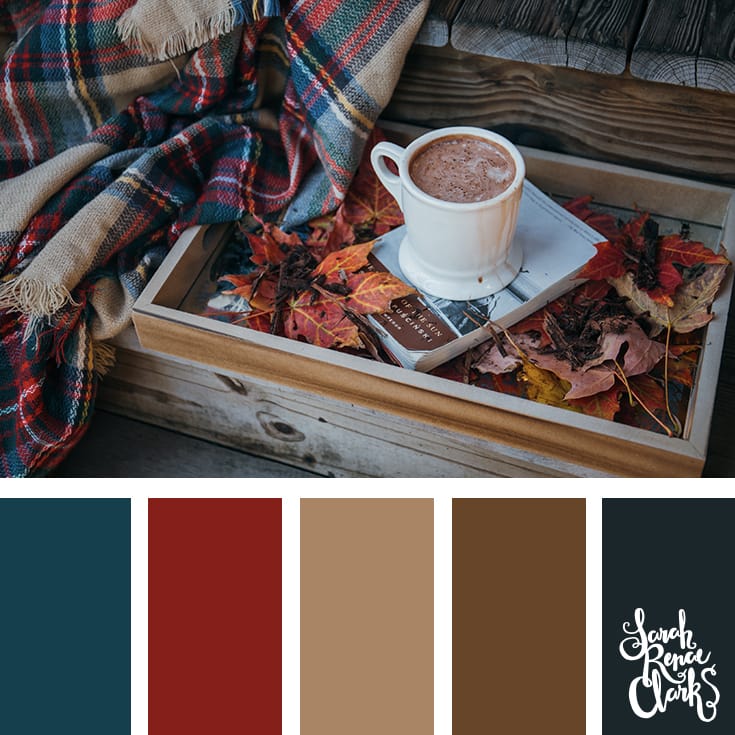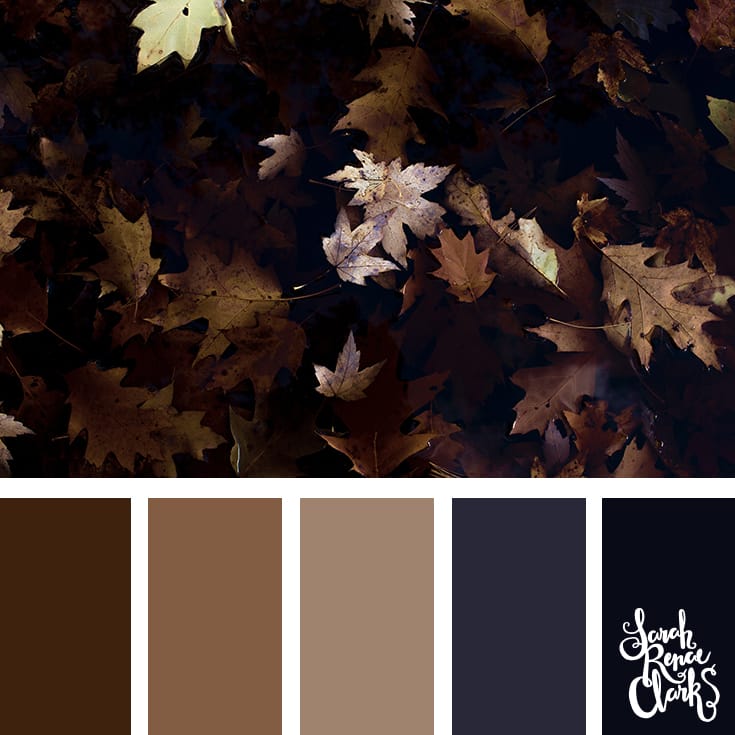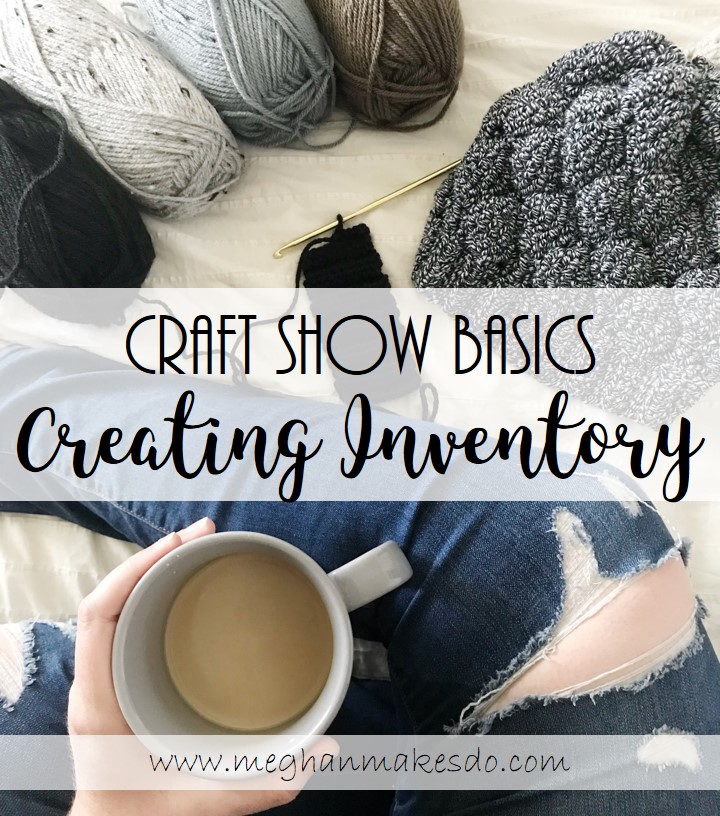How to Create Inventory for a Craft Show
Welcome to part three in my series all about craft shows. In case you missed the first two, we've already talked about How to Find and Apply to Craft Shows and How to Handle Rejection & Acceptance to a Craft Show.
Today we are going to dive head first into the topic of How to Create Inventory for a Craft Show. This can be one of the most exciting parts of doing craft shows. Yes, it can feel very overwhelming and it's hard to know where to start, but I'm hoping that by the end of this post you will be equipped with all the information you need in order to curate the perfect collection of products to sell at a craft show. There are two basic steps to creating inventory; deciding what to make and then actually making it.
1. Deciding What Products to Offer
This is by far the most important part about creating inventory for a show. It has taken me over 6 years to learn how important this step is. When I first started doing shows I didn't have a plan as to what I was going to sell. I scrolled through Pinterest and started creating a board with every single thing I thought I could make. I would spend my evening and weekends making as much as I could, but didn't really know how much to make. There was no rhyme or reason to the products I was making, it was basically whatever I felt like making at the time. I had a general idea of the way I wanted my booth to look and feel, but I didn't take the time to curate a cohesive collection of goods. I was trying to make anything and everything I could to show all my talents and was totally missing the mark. Now that I've learned a bit more about doing shows and about selling products, I've learned that it is so important to limit the amount of products you offer and to create a collection of goods that can really showcase your brand.
Here are some pictures of when I first started doing craft shows.
And here are pictures from my latest show in July.
It's easy to tell that I've learned a lot and have a much more cohesive feel to my brand now.
When creating a collection of goods start with your brand and answer these questions:
What kind of feeling do you want people to have when they walk into your booth?
How can you portray that feeling in your products?
What color scheme would fit your brand and the style you are trying to create?
Let's say that you want people to feel cozy and at home when they first walk into your booth. Your brand is all about comfort and style and you want to portray that in your goods. If you are a fiber artist then making comfy, modern hats, scarves and accessories may be a good place to start. Making these items in neutrals with a few muted colors thrown in will give you that cozy at home feeling.
It may be helpful to create either a secret Pinterest board or a physical inspiration board to help you create your collection. Gather or Pin pictures of items that would fit your brand and the feeling you want to portray in your goods. Pin colors, fabrics, and patterns that would all look good together. From there you can start creating a list of products that you want to make. I recommend sticking with 6-10 items total and offering a range of 6-8 colors. This will make things easier not only for you, but also for your customers. It is a lot easier to shop when there are limited styles and colors available. Having too many styles/items and colors to choose from can be overwhelming and cause people not to buy anything.
Here is an example of what an inspiration board for my current stock would look like.
If you are looking for some inspiration for color schemes check out the color palette's that Sarah Renae Clark has designed on Pinterest. Here are a few examples.
I know this can be a hard concept to grasp. It is hard to stick to only a few colors or a few styles of products when we know we can make so many things! Try to remember that you can make anything, but you can't make EVERYTHING. Being selective in what you make for a show will help you in the long run. Try to think of a show as a little sneak peek into your brand. You can always offer more items and colors online, but sticking to a small collection for shows is ideal.
Make sure you are selecting items that are:
1. Easy to make
2. Don't cost a ton to produce &
3. Are things that people want!
It's a good idea to have a range of prices so you can sell to people no matter what their budget is. If someone with $20 in their pocket comes into your booth, but all of your items are $50 and up, there won't be anything they are able to buy. Select items that start as low as $5 and go up from there. Remember, people who see your booth can always shop online later for the more expensive items.
2. Making Inventory
Now that you know what you are going to make, it's time to figure out how much to make. This is probably the biggest question I get. "How much should I make for a show?" While there isn't really a clear cut answer to this question, there are a few things that you can do to help to figure out how much you will need for a show.
First think about how much you would like to make at a show. Let's say your booth fee was $100 and you want to make at least 4 times your booth fee. That would mean you need to sell at least $400 worth of products so you need to make sure you have more than $400 worth of items available to sell.
You can also set a specific number you want to have for each item you make. For example this year I am offering two hat styles at my shows. I try to have at least 5 of each hat style in each size when I'm getting ready for a show. That means I need 30 hats since I offer adult, child and toddler sizes.
Another option is to create one of each item in every color you offer. So if you offer hats in 8 colors you will need 8 hats in each style you offer in all colors.
No matter how you calculate how much inventory to make keep in mind that it is always best to have more than less and it's pretty rare to sell out at a show. You can keep extra stock under your table too, so don't worry about only making enough to fit on your tables.
Once you have a rough idea of how many items you need to make, it's time to get to work making them. The amount of items you will need to make each week will vary depending on how much time you have before a show. For example, if you have a show coming up in 8 weeks and you need to make 40 items then you know you need to make 5 items per week. How ever you work it out, you can really never have too much inventory. Whatever doesn't sell at one show can be saved for the next.
Also, try not to stress too much about how much you have. Focus on making sure that the items you do have coordinate and are of high quality.
I hope you found the information here helpful when deciding how to create inventory for craft shows. If you have any other tips and tricks I'd love to hear them. Comment below or contact me here.
Happy Crafting!
Meghan




